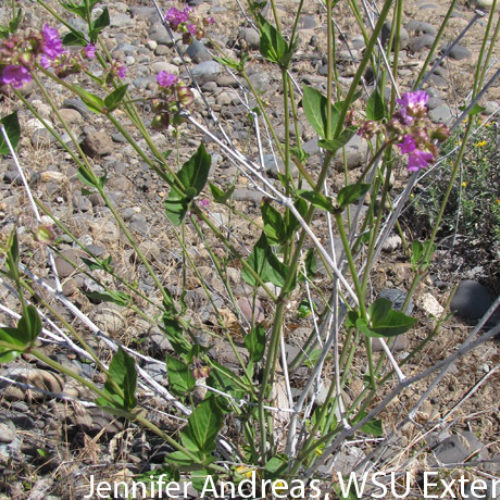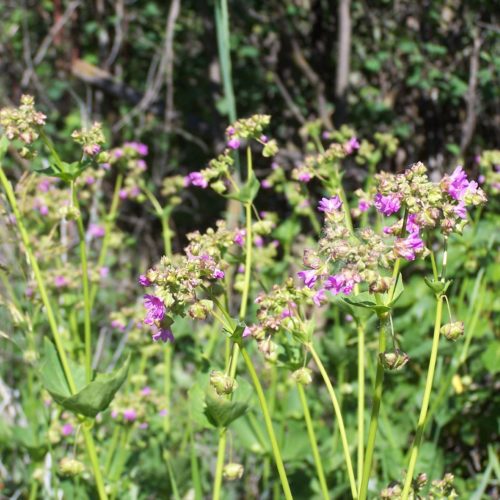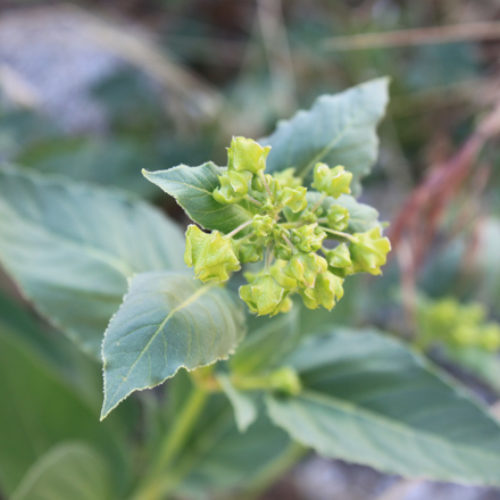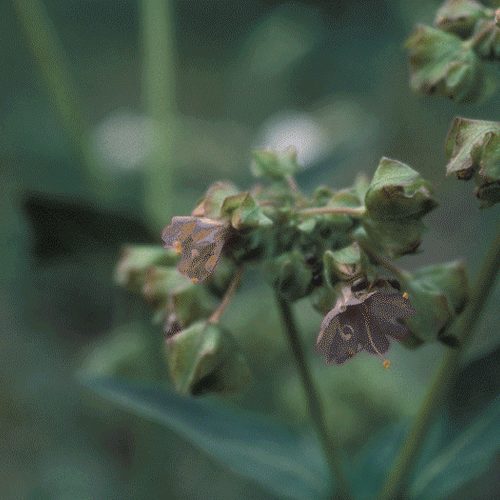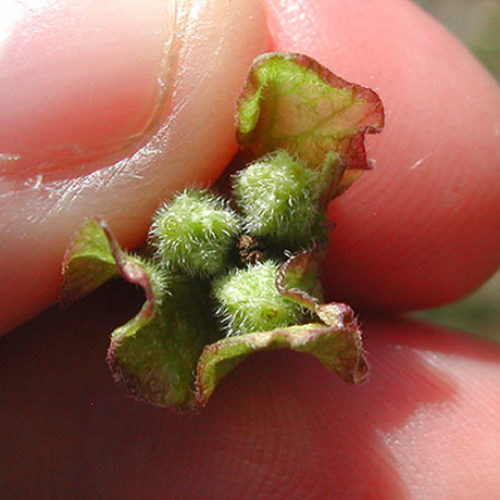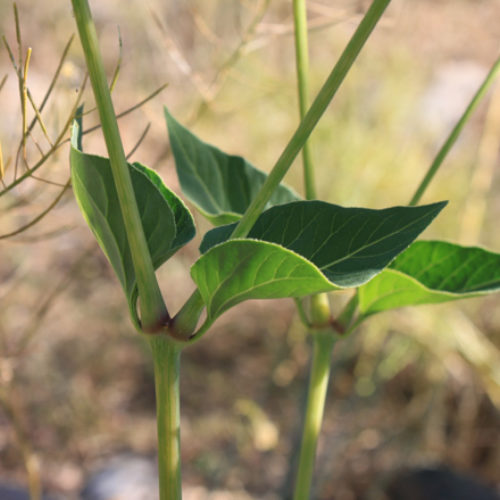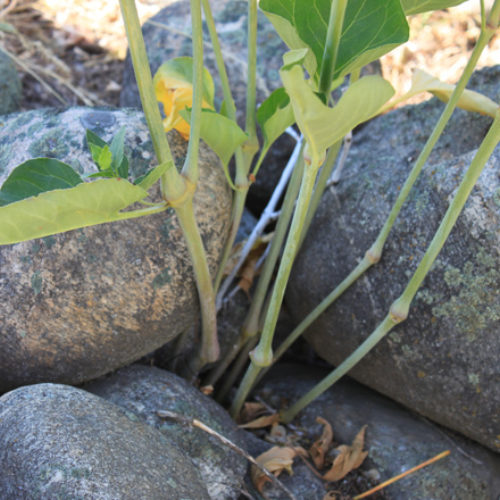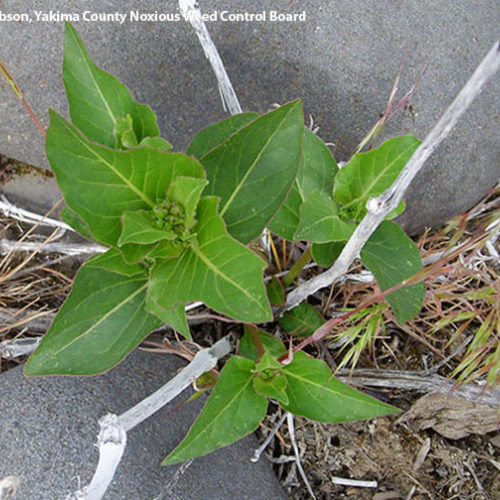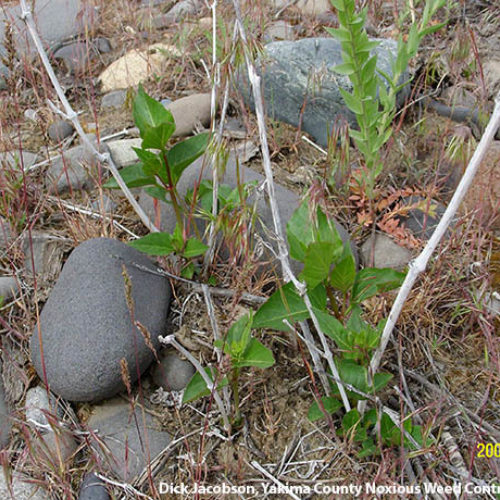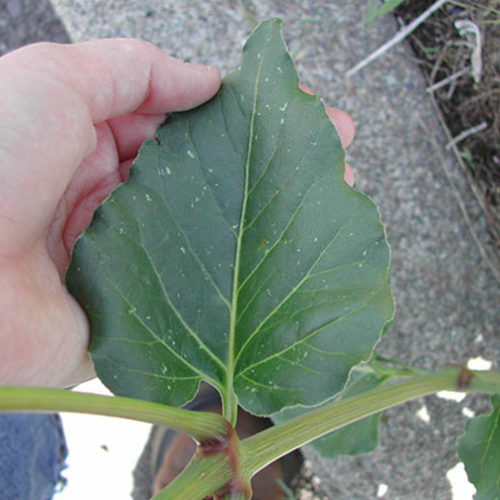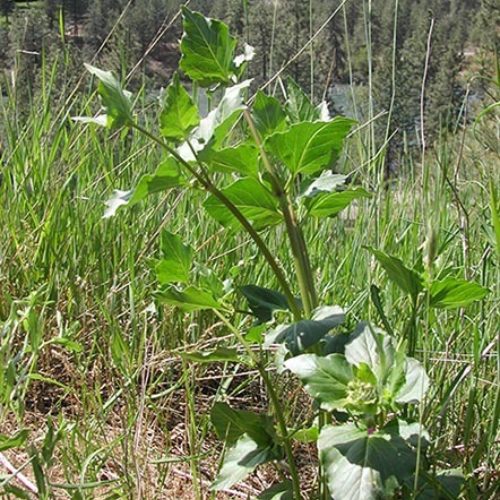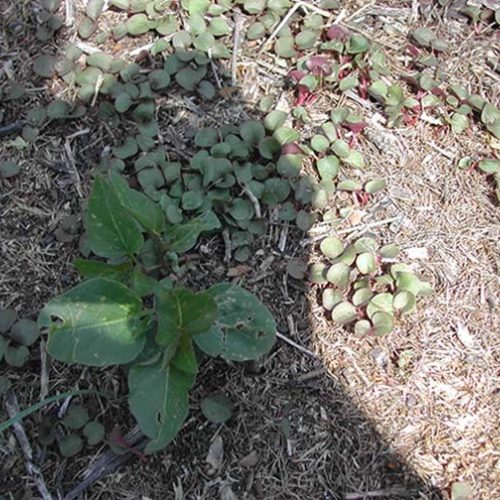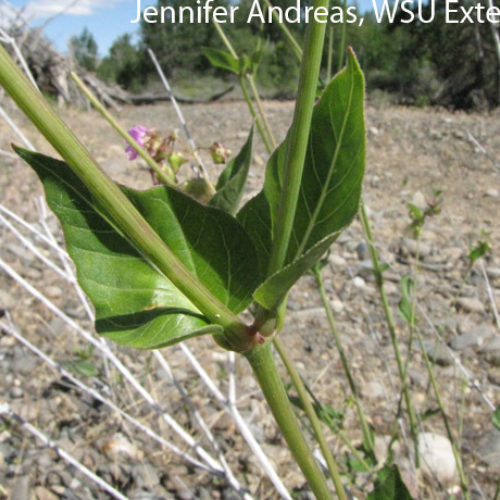Wild Four O'Clock
Mirabilis nyctaginea
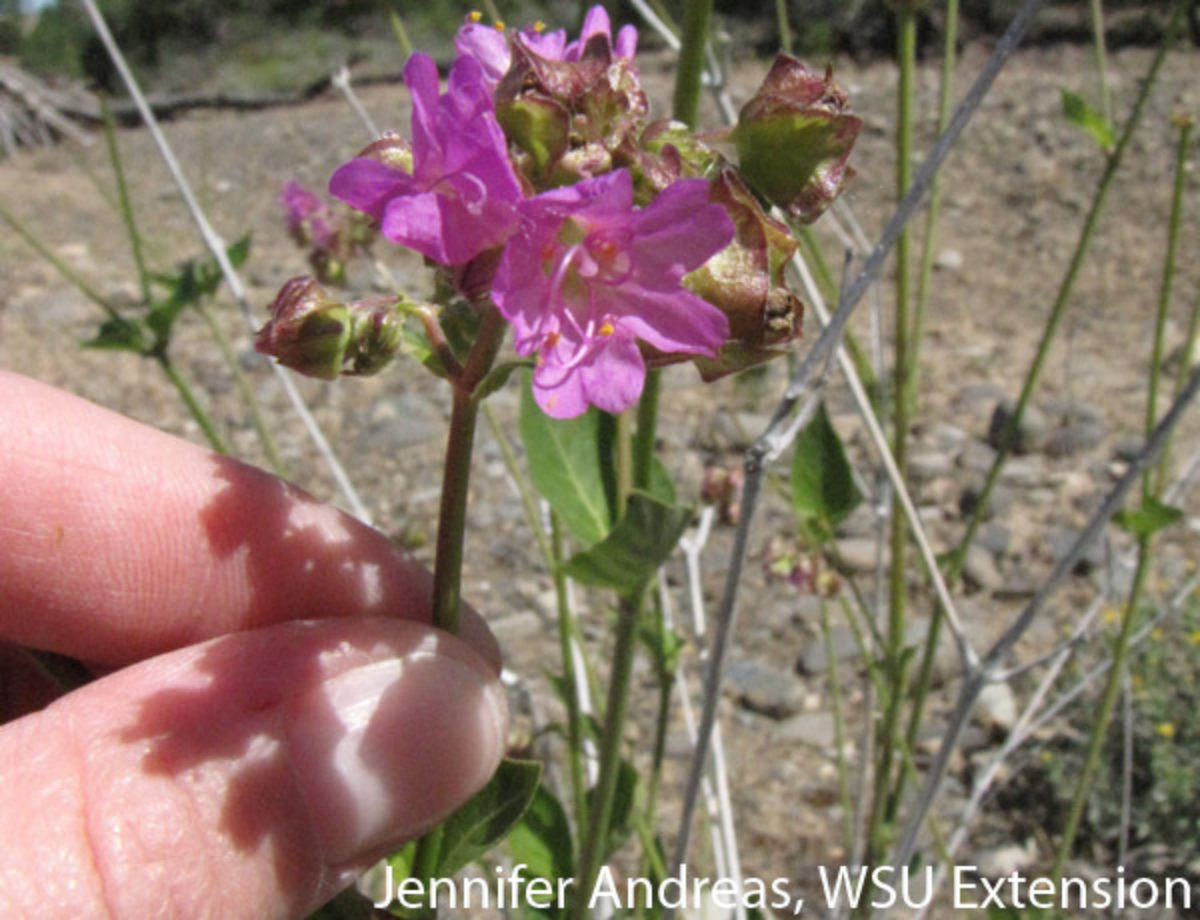
Family: Nyctaginaceae
Other Common Names: heart leaf four o'clock, heart-leaf umbrella-wort
Weed class: A
Year Listed: 1989
Native to: Native east of the Rocky Mountains, from Montana to Mexico, and east to Wisconsin and Alabama
Is this Weed Toxic?:
not known to be
Legal listings:
This plant is also on the Washington State quarantine list. It is prohibited to transport, buy, sell, offer for sale, or distribute plants or plant parts of quarantined species into or within the state of Washington or to sell, offer for sale, or distribute seed packets of seed, flower seed blends, or wildflower mixes of quarantined species into or within the state of Washington. Please see WAC 16-752 for more information on the quarantine list. For questions about the quarantine list, contact the Washington State Department of Agriculture's Plant Services Program at (360) 902-1874 or email PlantServices@agr.wa.gov.
Why Is It a Noxious Weed?
It is a weedy plant that is capable of establishing in a wide range of habitats. In Washington it has shown the ability to spread from a small 10 acre site to several hundred acres. It is capable of impacting agricultural and range lands.
How would I identify it?
General Description
It is a perennial herb, sometimes woody at the base, reaching 3 to 4 feet tall. It has a thick, black taproot that can extend downward for two feet. The name refers to the flowers, which open late in the day and whither early the next morning.
Flower Description
Flowers are about 3/8 in diameter and are in clusters of 3 to 5 growing from a short, hairy flowerstalk at the tips of the plant. A whorl of bracts is found at the base of each flower. The flowers have 5 reddish to lavender sepals and no petals.
Leaf description
Leaves are oppositely arranged, heart-shaped to egg-shaped and 2-4 inches long and 1-3 inches wide. The lower to middle leaves are attached by a petiole (leaf stem). Upper leaves may be sessile (no leaf stem). Leaves are waxy and usually hairless.
Stem description
The plant’s overall shape is bushy and the stems are oppositely branched (pairs of branches along the stem). The upper stems and leaves are sometimes glaucous (covered with a whitish or bluish waxy covering).
Fruit Seed Description
Seeds are prominently five-ribbed, warty, somewhat hairy, grayish brown in color and ranges from 1/8 to 1/4 inch in length.
Where does it grow?
Wild four o'clock is found in a range of habitats in eastern Washington, including orchards, alfalfa fields, rangeland, right-of-ways and disturbed areas. It can also grow along riverbeds, and in sandy, rocky, and heavily cultivated soils. Please click here to see a county level distribution map of wild four o'clock in Washington.
How Does it Reproduce?
It reproduces by seed and by fragmented root pieces. Seed is set from July to September. The involucre aids in the dispersal of the seeds, acting as a small umbrella which catches on vehicles.
How Do I Control It?
General Control Strategy
Mechanical Control
Hand pulling is not recommended because the stems break at the crown. The roots are strongly branched, and broken root pieces will produce sprouting. Small infestations can be spaded or dug up. Repeated mowing or cultivation will prevent seed production and lower the seed bank. Eventually the plant will die from loss of nutrient reserves stored in the root. Plow infested meadows and plant a cultivated crop for 2 years. Hoe out remaining plants.
Cultural Control
Field corn does compete well with wild four o'clock.
Herbicide Control
Please refer to the PNW Weed Management Handbook, or contact your county noxious weed coordinator.
For More Information
See our Written Findings for more information about wild four o'clock (Mirabilis nyctaginea).
See our postcard for early detection information about wild four o'clock.
Report on wild four o'clock from "Weed Control in Natural Areas in the Western United States"
Invasive.org webpage on wild four-o'clock




